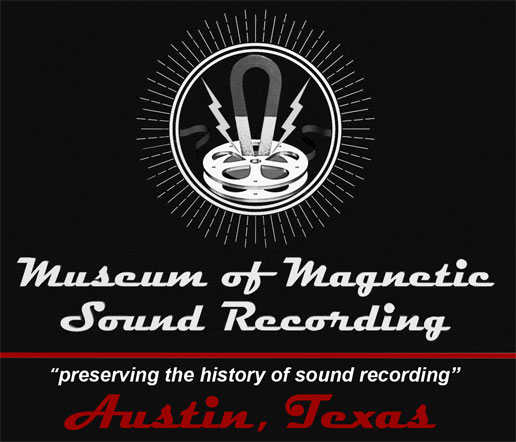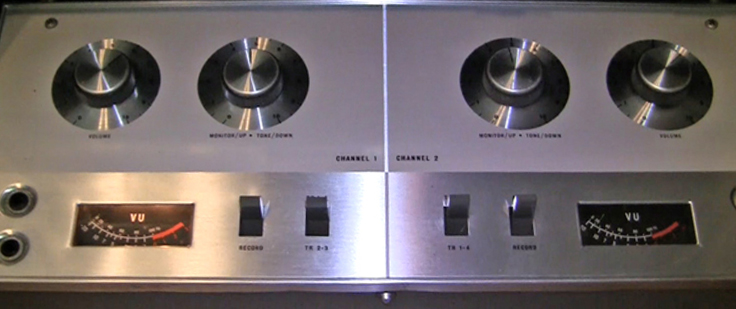Preserving the stories of significant individuals in sound recording generally and magnetic recording specifically is a major project of MOMSR. The Museum’s goal is to document the stories of those persons who contributed significant inventions, manufactured equipment and who engineered and produced audio recordings, especially in the areas of music, broadcast, film/video and science. These interviews will be available on MOMSR’s web site and in the permanent facility when it is created. These interviews have also been made available to the Audio Engineering Society (AES) and the National Academy of Recording Arts and Sciences (Grammy’s).
Webcor
Here's some correspondence we received from Bill Carpenter who worked for Webcor, as well as Ampex. He provides information about Webcor's last reel tape recorder the Webcor Professional CP-2500. 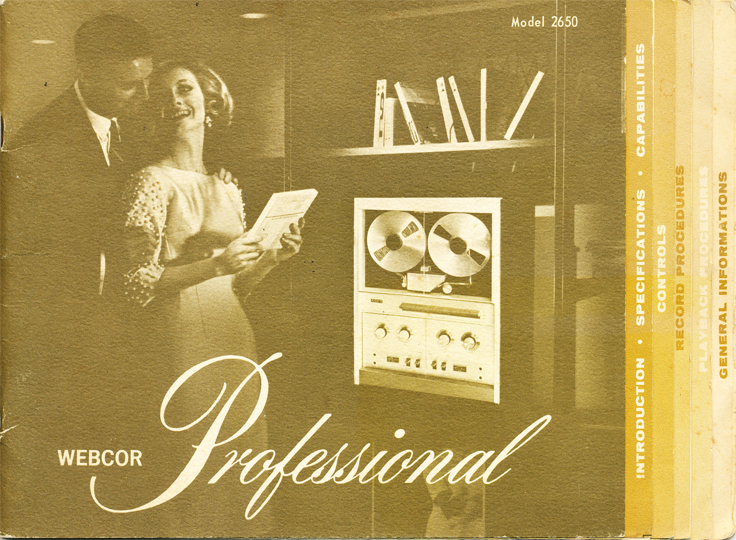
Thursday, August 6, 2009 at 11:13:07
To: Martin, Phantom productions, Inc.
I just found your directory/museum and I think it's great.
I have a 1956 vintage, Bell & Howell "TDC" 3 motor audio recorder, which I bought in early 1956, and used to start a recording business.
Later I worked for the Govt. Div of Webcor, 1959-1964,
Webcor 1964-1965 ( I worked on the Pro 2500 product)
Ampex 1965-1971 EIPD ( Elk Grove, Il) on early 1" video recorders
Ampex 1971-1996 Redwood City,Ca, Broadcast Video Records, product management, marketing management.
I have spent my entire professional business career in magnetic recording, 12 years in design, and the remainder in management.
-----------
Hi again Martin ("Phantom")
No, The 2500 was not any cutting edge design, at least in the tape transport design. A typical BFB design of the period.
I should explain, "BFB", was our slang for " Babies First Burp", sorta like "point & shoot" for the late simple, automatic 35mm cameras.
The real development was in the sound output system.
The solid state transformer-less stereo amp was "bulletproof" in a day when a Stereo 10W/channel RMS amp was a scary design at best.
The speakers were a pneumatic loaded and were a acoustically sealed box, "bookshelf size" which were a cheap copy of the Acoustic Research AR-2a design.
They were sturdy plywood boxes, lots of fiberglass material for filling and even had a sealed RCA phono jack to make spec's
They contained a 8" soft edge long throw speaker and a 3.5" tweeter.
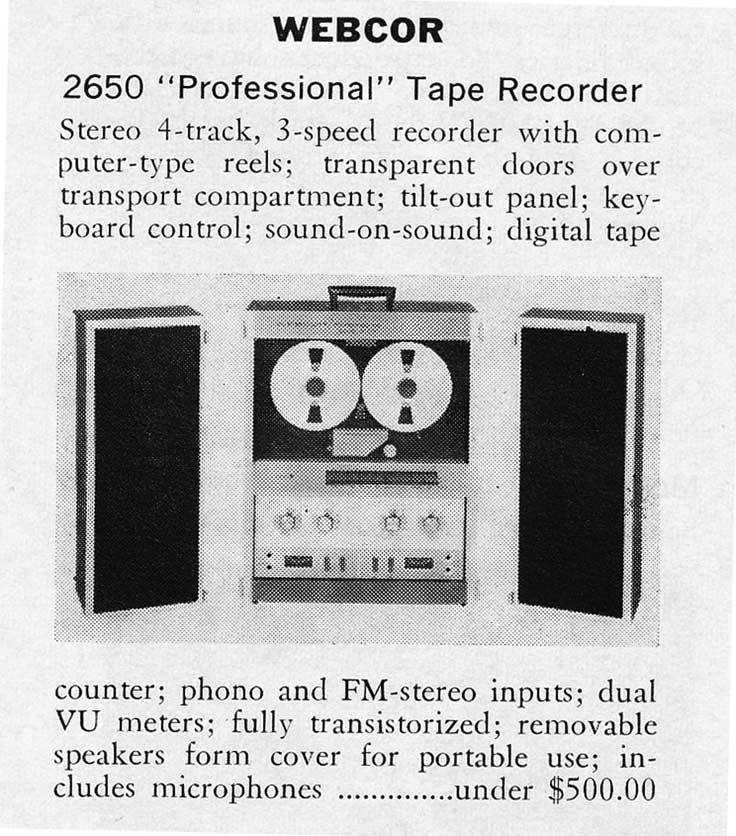 On low and mid range they were equal to the AR-2a's, but on the high end is where the outperformed everything available in the marketplace, except the Ionic tweeter which used a "blue gas", which was visible, and cost in the + !,000$ area, in 1965$.
On low and mid range they were equal to the AR-2a's, but on the high end is where the outperformed everything available in the marketplace, except the Ionic tweeter which used a "blue gas", which was visible, and cost in the + !,000$ area, in 1965$.
The trick of the tweeter was that in trying to equal the high end performance of JBL's, Titanium Dome tweeter which was only part of the highest end systems, the design engineer stumbled on to something very great and very cheap. It was 3.5", very hard paper coned tweeter with a big magnet structure, and in our tests, the limiting factor was the spider.
In case you have never taken speakers apart, the spider is the device that centers the voice coil in the area around pole piece of the magnet.
When the engineer started cutting away portions of the spider, the performance improved and the tweeter was much flatter in response.
So, when it got so small & thin, he looked for something else to support & center the voice coil, and what worked very well was GREASE!
Not just any grease, but Dow Corning's, space age Silicon grease, namely DC-200, which was close to peanut butter in it's consistency, but silky smooth, and very slippery. They added a turned aluminum pole piece on the front of the magnet pole piece, which looked good, and did a small amount of field shaping, but the real breakthrough was replacing the spider with grease.
The speaker builder figured out how to contain the grease since it did not run and was stable over a wide temperature range.
When this was all complete, the SUPER Tweeter cost us about $3.26 each in a 100 unit quality purchase.
Many years later the speaker folks, used the same grease trick to dissipate heat to keep voice coils in big, high power speakers for burning up.
The other great feature of this product, was that to make the amp " bulletproof, a barretter, was added in series with the output transistors, which in essence, was a low resistance device in series with the output device which would change in value with increased current.
This was in the form of a 12V, taillight bulb, with two identical filaments and it was mounted on the small heat sink, between the two sets of power transistors, with wire leads going thru the pc board and a gob of silicon heat sink grease held the bulb in place during assembly.
So, when you were driving the system close to the 10W limit, the bulb would get very bright, and if you knew where to look when we were driving the system with our favorite test recordings, Leon Barry's pipe organ music, you could easily understand how well the system was working, if your ears could stand the sound pressure.
I was asked to support the first major product dealer demo, with the sales manager at the Friar's club in NY city, on about 2 hours notice, when somebody else backed out.
I said I would do it, only if I could take my own demo tape to show the system properly.
The demo went well, and I used this amp for my home stem for the next ten years, when it got replaced by a Receiver.
Bye for now, Bill Carpenter
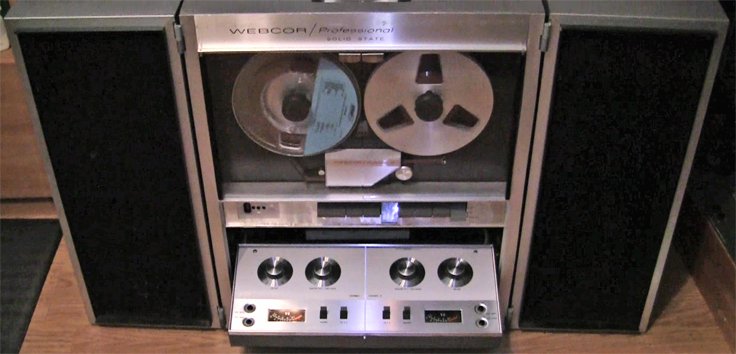
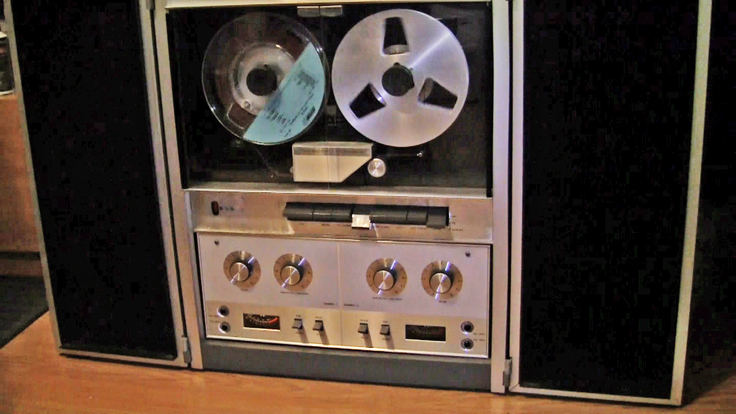
Please help us create a permanent public home for this collection and other historical recording devices!
